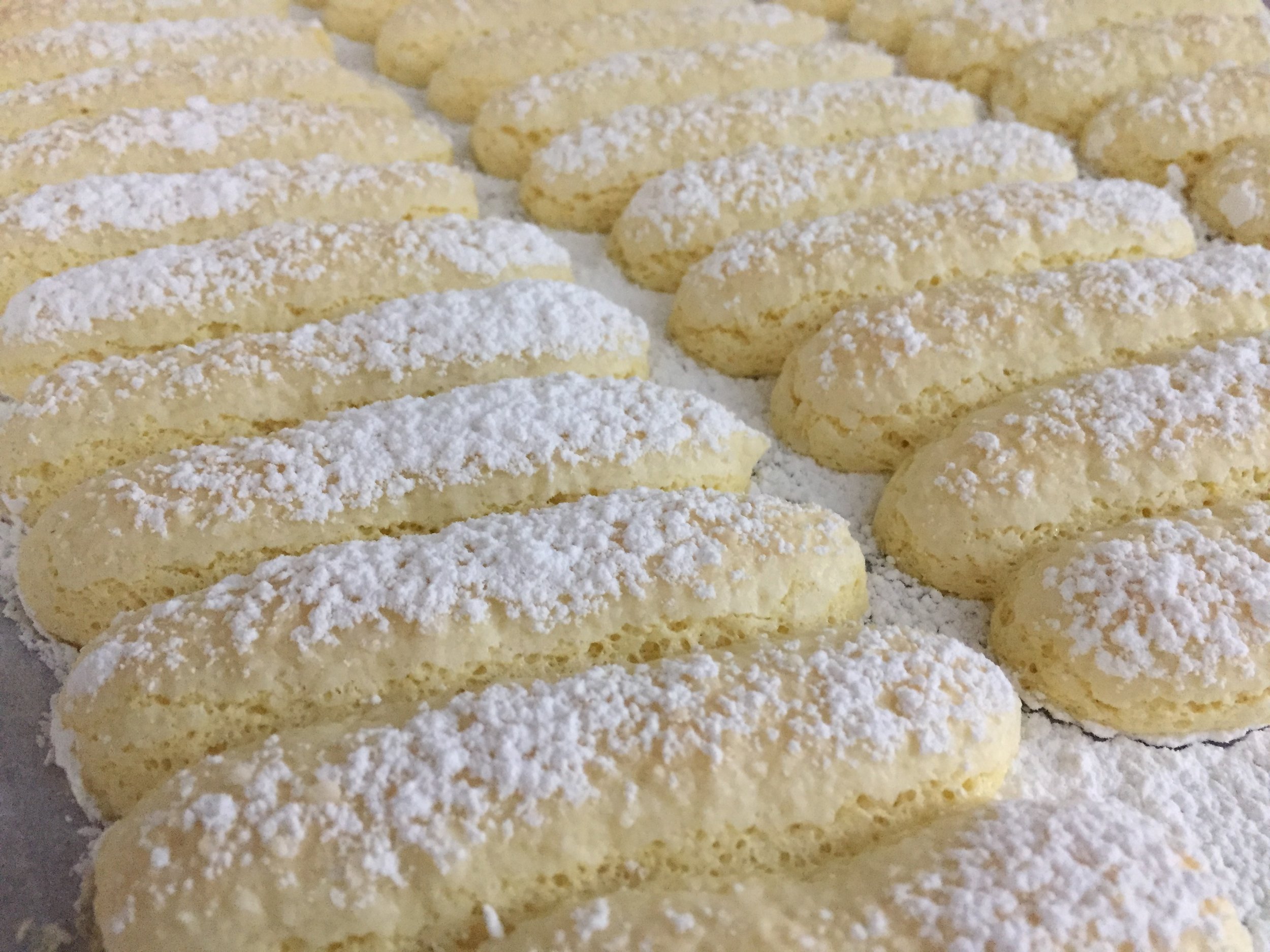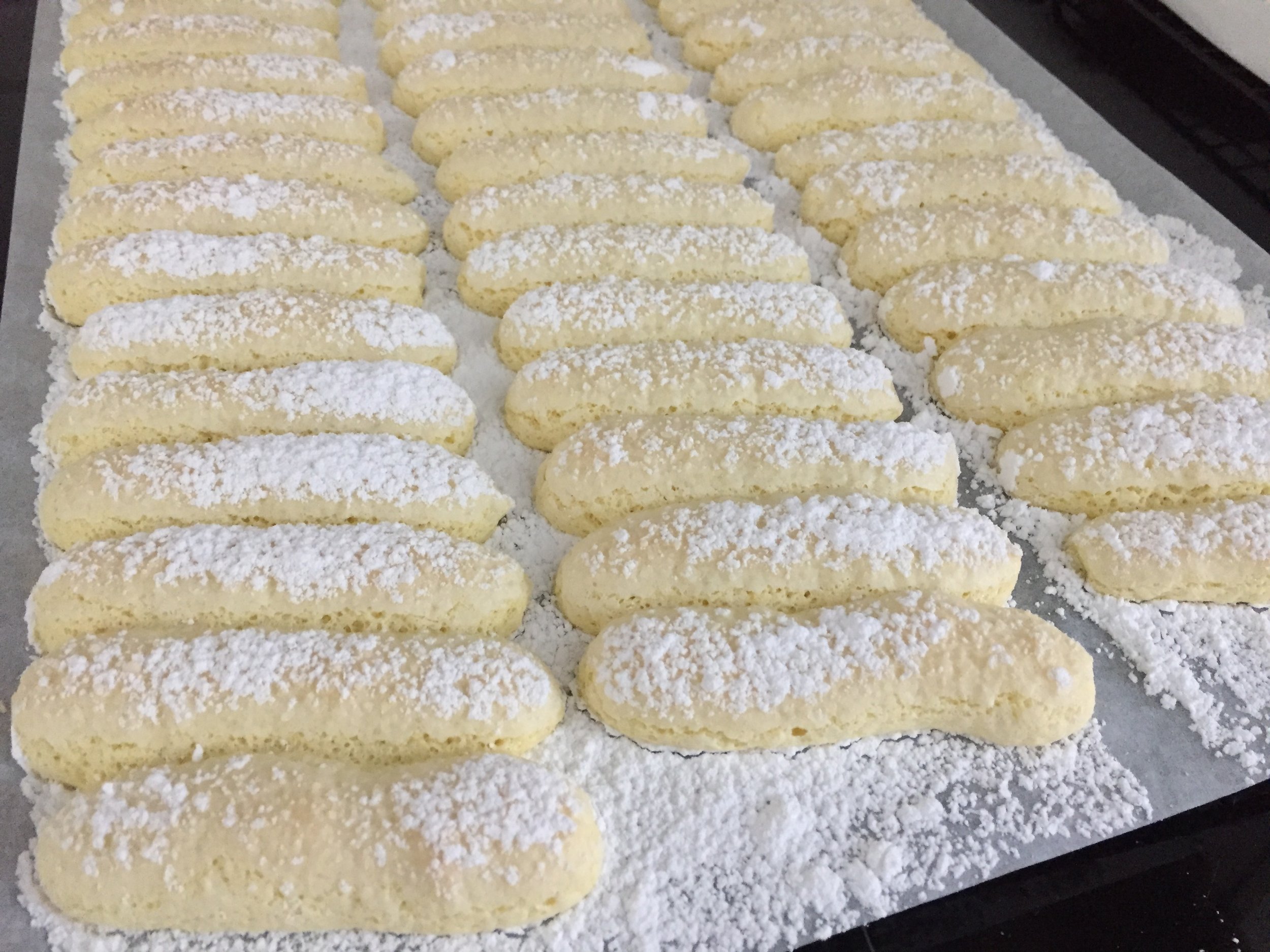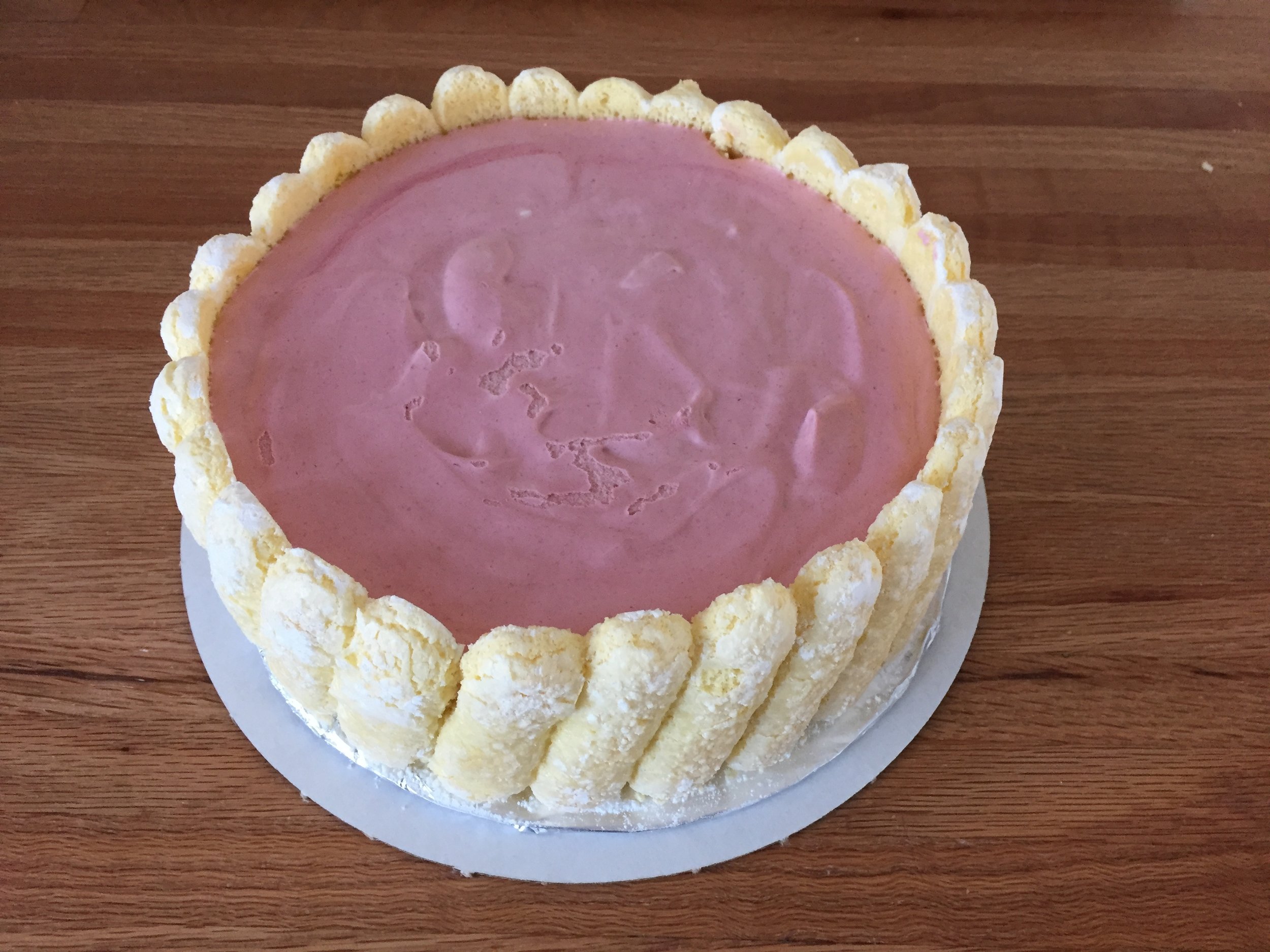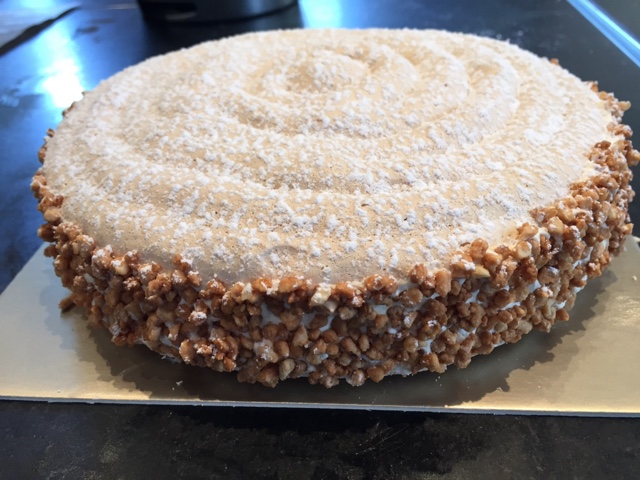Charlotte aux framboises
/Ladyfingers (biscuit à la cuiller en Français) are just one of the components of a classic charlotte russe, a dessert created with the finger-like sponge cakes as a border, filled with a fruited bavarois and often garnished with crème Chantilly and fresh fruit. Raspberry and pear are two of the commonly used fruits for this particular delight.
Having recently been asked to make the raspberry version for a birthday dinner party for 10, back to the recipe file I went to review the various options for creating the dessert. Both Le Cordon Bleu’s pear charlotte (from my basic pastry classes there) and Michel Roux’s raspberry charlotte served as the springboard for my decisions. Believe you me, there are lots of variations out there.
I opted for a raspberry crème anglaise with added gelatin, blended with softly whipped cream (the makings of a typical bavarois). I went one step further and added some Italian meringue to boot, but you’d be happy with a bavarois by itself if you don’t want to fuss with the meringue part. Either way it’s a great combo!
The filling (even without the Italian meringue) makes plenty for a 9” springform pan. Put any leftovers in ramekins, chill to set and top with fresh fruit, chopped toasted nuts, chocolate sauce or whatever for a lovely light dessert on the fly.
But let’s take it a step back and review the process, OK? Ladyfingers are basically a sponge cake made with eggs, sugar and flour. The eggs are separated, the yolks are beaten with a portion of the sugar until blanched and thickened, and the whites beaten with the other portion of the sugar to stiff peaks (think meringue). The beaten whites are folded into the yolk/sugar mixture then the flour is sifted into the whole shebang and folded in gently. The leavener here is the aeration created by all of that egg whipping. Here’s the printable ladyfinger recipe.
Then it’s time for piping. Yay!
Wanting to put a diagonal slant on my ladyfinger border, I penciled my template for piping onto parchment paper and turned it over so the marks ended up on the non-baking side.
Pipe the lengths close together so once baked they meld into connected portions with which to line your mold. You can also see my base piece below.
They get a decent dusting of confectioner’s sugar times two before going into the oven. The idea is that the powdered sugar beads and crusts up a bit in the oven.
Bake them at 400ºF for 6-8 minutes et voilà!
It takes a little planning to assemble the charlotte, particularly depending on what type of form or pan you have on hand. In pastry school one typically uses an open cake ring lined with acetate film but I opted for the ring portion of my 9” springform pan lined with a parchment collar.
One of the great things about this dessert is its make-ahead-ability. It can be fully assembled and kept in the fridge for a couple of days or frozen for a week before your planned event. Just bake the ladyfingers and base, line your mold with the powdered sugar side of the sponge cakes facing out and hold it in the freezer while making your filling. Once filled, fridge it for a day or two ahead or freeze for a week if need be. It’s a beautiful thing.
The final garnish can be completed the day you plan to serve.
As you can see below, I tucked scraps of sponge cake along the inside bottom edge and where the ladyfinger borders meet to provide a secure cocoon for my raspberry filling. For just a little something extra I arranged fresh raspberries on the bottom.
Having completed my filling of raspberry bavarois lightened with Italian meringue, I poured it into my ladyfinger-ed mold almost to the top. Just remember - due to the timing of adding the gelatin and cooling the crème anglaise to just the right temperature for adding the whipped cream and Italian meringue, it’s imperative that your border and base are at the ready. Once the filling is in it’s simply a matter of chilling the whole thing and letting the filling set.
A final topping of crème Chantilly and fresh raspberries, and you can call it a day!
Since I made this for someone else’s party, I couldn’t slice into this baby right then and there to show you a cut section. Buuuuut . . . . I certainly did taste some ladyfinger scraps with a bit of the bavarois filling, and I say yes indeed!





































